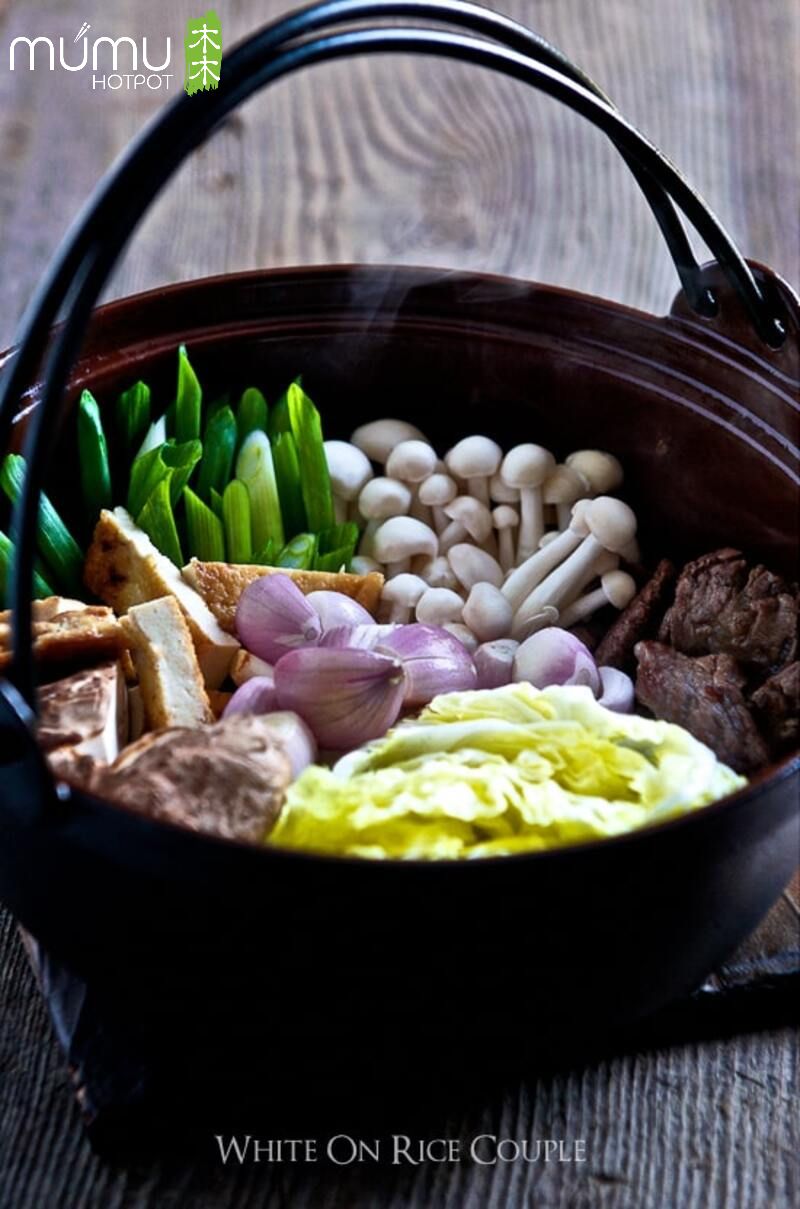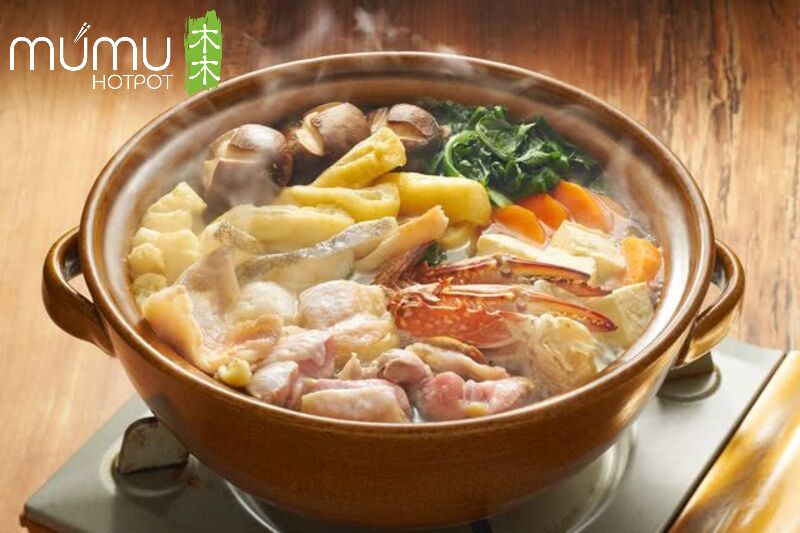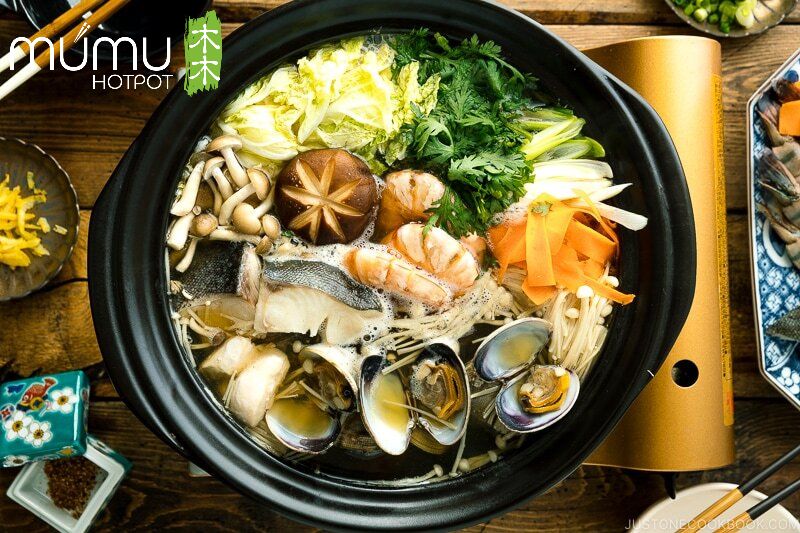Japanese Hot Pot: The Authentic Japanese One-Pot Meal
Japanese Hot Pot - A favorite among locals and travelers alike, the enjoyable communal process of hot pot cooking and eating has been a beloved staple in Japan for centuries. In this blog post, we will dive deep into the history of Japanese hot pot and take an in-depth look at how it can be used as an entertaining way to bring any gathering together - whether it's just one person or hundreds. Learn all about its traditional components, creative recipe ideas, health benefits associated with certain ingredients, and more. Read on to learn why the Japanese Hot Pot is a fun culinary adventure everyone should experience!
What is Japanese Hot Pot?
Japanese hot pot, also known as nabe-mono, is a type of Japanese dish that typically consists of various ingredients such as meat, seafood, vegetables, and tofu cooked in a simmering pot of broth. The broth can range from mild flavors like miso or soy sauce to more spicy broths. Nabe-mono is usually served at the table with everyone sharing the same pot. It's a popular way to enjoy a meal together while socializing with family and friends. There are many variations on nabe-mono, so you can create your own unique combination for each gathering. Enjoy experimenting with different combinations of ingredients to make the perfect Japanese hot pot!

The best part about making a Japanese hot pot is that it's incredibly easy and fun to make. All you need to do is select your ingredients, prepare them by cutting them into bite-sized pieces, and then place the ingredients into the pot of broth. Once everything is in the pot, bring the contents up to a boil and then reduce the heat and let it simmer until all of the ingredients are cooked through. After simmering, serve with rice or noodles for a delicious meal!
Japanese hot pot is a great way to enjoy an interactive meal with friends and family. It encourages everyone to be creative with their own combinations of flavors while experiencing the deliciousness of different types of broths. With its convenience and flexibility, Japanese hot pot can easily be enjoyed on any night of the week. Get creative and enjoy!
Why is Japanese Hot Pot becoming so popular?
Japanese hot pot has been around for centuries, with various local regions having their own unique versions. It was originally called Nabemono or Oden and consisted of a large pot filled with soy sauce-based broth and various ingredients. In the Edo period (1603–1868), it became more popular among townspeople thanks to the increasing availability of ingredients such as fish, meat, vegetables, tofu, and mushrooms. During this time, regional flavors and customs began to emerge as each area developed its own signature hot pot dishes.

In modern Japan, hot pots are still very popular in both homes and restaurants alike. Nowadays you can find many variations that go beyond the traditional style of cooking—from rich miso-based broths to sukiyaki and even shabu-shabu. The variety of ingredients and flavor combinations make a hot pot the perfect meal for those who love to experiment with their food!
The popularity of hot pot in Japan has resulted in it becoming a staple dish throughout Asia, including countries such as China, Korea, and Taiwan. With its easy preparation and endless possibilities, it’s no surprise that Japanese hot pot is an international hit!
Japanese Hot Pot Flavor
Japanese hot pot is a popular way to enjoy flavorful broth and ingredients, and an essential part of the experience is the flavorings used to enhance the soup. Commonly used seasonings include soy sauce, miso paste, sake, mirin, ginger root, garlic, sesame seed oil, and bonito flakes. Soy sauce adds depth and umami flavor to the broth while miso paste adds a bold salty flavor with some sweetness. Sake gives a slightly sweet taste while mirin brings out sweetness without overpowering other flavors. Ginger root adds warmth and aroma while garlic provides boldness when added in small amounts. Sesame seed oil is often drizzled on top at the end for additional nutty flavor while bonito flakes give the broth a smoky flavor. With so many delicious seasonings to choose from, you can create endless flavor combinations to enjoy. Experiment with different amounts of each ingredient until you find your perfect broth!
To really elevate your hot pot experience, try adding some fresh herbs or vegetables such as shiitake mushrooms, carrots, and scallions to the soup. These will add an extra layer of depth and complexity to the broth while also providing nutrition and health benefits. For added creaminess and texture, consider adding cubes of tofu or udon noodles at the end for a heartier meal. Finally, don’t forget about garnishes like grated radish or chopped green onions which can be used to top off your hot pot.
The ingredients and how to cook Japanese Hot Pot
Ingredients:
- 1 stalk scallion, chopped
- ½ package firm tofu cut into ½ inch slices
- ½ carrot, peeled and sliced
- ½ pound thinly sliced beef rib eye for sukiyaki
- ½ head napa cabbage (5-6 leaves)
- ½ package firm tofu cut into ½ inch slices
Broth
- ¼ cup mirin (Japanese sweet cooking rice wine)
- ¼ cup soy sauce
- ¼ cup water
- 1 tsp sugar
- How to cook:
- Combine mirin, soy sauce, sugar, and water in a small saucepan and boil it. When it boiled, turn off the heat and set aside.
- Cut the ribeye steak into paper-thin slices (or most Asian grocery stores have pre-sliced beef for sale)
- Brush off the dirt on the enoki mushrooms with a paper towel, cut them off discard the roots, tear them into smaller bundles, and set aside.
- Cut tofu into ½-inch slices and slice the carrot
- Separate the napa cabbage leaves from the stem, rinse them under water, and set aside.
- Place and arrange all the ingredients in a Japanese clay pot or a cast iron pot and pour the broth into the pot.
- Cover with a lid and bring to a boil under medium-high heat.
- When it boiled, turn to low heat, and simmer (with the lid on) for another 15-17 minutes until all ingredients are cooked through.
- Sprinkle with chopped scallion to serve and enjoy!
Tips for creating an enjoyable experience with your Japanese hot pot meal
- Prepare your ingredients ahead of time. Having all the necessary ingredients ready will help to ensure that you are not scrambling at the last minute when it is time to cook your hot pot meal.
- Make sure to have plenty of dipping sauces for everyone to enjoy their meal with. Many different types of sauces from sweet and sour, spicy, or even something creamy like mayonnaise can make a big difference in how enjoyable the experience is for everyone involved.
- Create an interesting presentation for the meal by arranging the meat, seafood, vegetables, and noodles on platters around the hot pot so that everyone can easily reach what they want without having to search through the boiling liquid.
- Allow each person to choose their own ingredients and build a meal that is personalized for them. This will make the experience much more enjoyable and allow everyone to enjoy what they like most.
- Use a variety of mushrooms, such as shiitake or oyster mushrooms, for an extra layer of flavor in the hot pot broth.
- Use colorful vegetables like carrots, bell peppers, and bok choy to add color to your hot pot creation and make it look even more appetizing.
- Have different types of noodles available such as udon, ramen noodles, soba noodles, or rice vermicelli so that people can choose which type they prefer.
- Offer a variety of side dishes to accompany the hot pot such as steamed rice, potato salad, or even some kimchi for those who are adventurous.
- Most importantly, enjoy the experience! Hot pot meals are meant to be shared and enjoyed with friends and family and can create lasting memories that will stay with you for years to come.
What are the health benefits associated with eating Japanese Hot Pot?
Japanese hot pot dishes are a healthy and nutritious choice because they contain all the essential nutrients and vitamins that your body needs. Hot pot soups are typically made with lean meats or seafood, fresh vegetables, and various types of noodles, which provide protein, fiber, minerals, and vitamins. Additionally, many hot pot recipes call for ingredients such as mushrooms which have been found to be antioxidants that can help strengthen your immune system. Eating Japanese hot pot is also one of the healthiest ways to eat as it allows you to control the amount of sodium and other unhealthy additives in each dish. The broth is generally low in calories but high in flavor so you can enjoy a delicious meal without feeling guilty about what you’re eating. Additionally, eating a Japanese hot pot meal can help you stay full and satisfied for longer as the soup will take time to digest. This is perfect for those who are trying to lose weight or maintain a healthy lifestyle. All in all, Japanese hot pots offer many nutritional benefits that make them an excellent choice for both health-conscious eaters and those who simply want to enjoy delicious food without compromising their well-being.
Conclusion:
In summary, the Japanese hot pot is a traditional meal of boiling broth that can be enjoyed with a wide variety of ingredients. Not only is it a delicious way to enjoy the flavors of various meats, vegetables, and noodles in one dish, but it also provides an easy and interactive experience for families and friends gathered around the table. Overall, it's an enjoyable way to indulge in some delicious Japanese flavors! If you haven’t tried it yet, this is your chance to experience a traditional custom of Japan and explore its unique deliciously savory flavors. Taste the thick stock of umami flavors as you enjoy the freshly cooked ingredients with your loved ones - you won’t regret it!
Please follow Mumu Hot Pot to learn more about their enticing hot pot dishes and explore further into Japanese Hot Pot.




